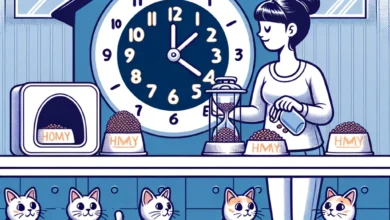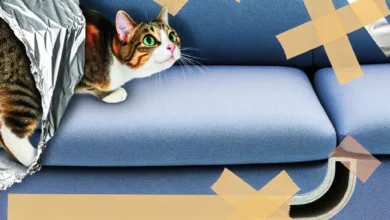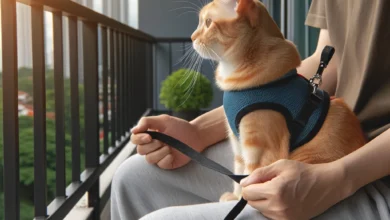What is a good amount of toys for a toy room for cats 2024 ?

When creating a well-equipped playroom for feline enrichment, it is prudent to consider a diverse selection of toys that cater to the multifaceted needs and instincts of cats. Here is a curated list of toys conducive to fostering a stimulating environment:
What is a good amount of toys for a toy room for cats ?
- Interactive Puzzle Toys: These toys engage a cat’s cognitive abilities and physical prowess, enhancing mental stimulation. Examples include puzzle feeders and treat-dispensing toys.
- Feathered Wands: Designed to mimic the unpredictable movements of avian prey, feathered wands facilitate interactive play between feline companions and their human counterparts.
- Balls and Soft Toy Mice: Simple yet effective, small balls and soft toy mice encourage batting and chasing activities, promoting physical exercise and mental engagement.
- Catnip-Infused Toys: Catnip, a herbaceous plant known for its appeal to cats, can be incorporated into toys, providing sensory enrichment and recreational pleasure.
- Tunnels: Enclosed spaces such as tunnels serve as retreats, appealing to a cat’s instinct for security, while also serving as an engaging location for play.
- Scratching Posts: Essential for maintaining claw health, scratching posts double as a strategic play area. Selecting posts with various textures and heights can cater to individual preferences.
- Automated Toys: Battery-operated toys featuring self-directed movement offer independent entertainment, contributing to a cat’s physical activity and mental engagement.
- Soft Plush Toys: Plush toys provide tactile comfort and can serve as companions for cats seeking solace or relaxation.
In terms of quantity, a judicious assortment of these toys, introduced gradually, enables observation of individual preferences. Regular rotation of toys prevents monotony, ensuring sustained interest. Moreover, interactive play sessions with feline companions further strengthen the human-animal bond, offering a holistic approach to a cat’s physical and psychological well-being.
How often should cats play with toys?
The frequency of play for cats with toys can vary based on factors such as the cat’s age, health, and individual temperament. Generally, it’s recommended to engage in interactive play with your cat daily. Interactive play not only provides physical exercise but also stimulates your cat’s mind and fulfills their natural hunting instincts.
Here are some guidelines for incorporating play into your cat’s routine:
- Daily Playtime: Aim for at least 10-15 minutes of interactive play with your cat each day. This could involve using toys that mimic prey, such as feather wands or laser pointers.
- Variety of Toys: Provide a variety of toys to keep your cat’s interest. Cats can be picky, so having different textures, shapes, and types of toys can cater to their preferences.
- Solo Play: Additionally, ensure your cat has access to toys they can play with independently. These could include balls, puzzle feeders, or automated toys that move on their own.
- Rotate Toys: To prevent boredom, rotate the toys you make available to your cat. This can make “old” toys seem new and exciting again.
- Observe Your Cat’s Preferences: Pay attention to the types of toys your cat enjoys the most. Some cats may prefer chasing toys, while others may be more interested in batting at or pouncing on objects.
- Consider Your Cat’s Age: Kittens and young cats may have more energy and may benefit from more frequent play sessions. Older cats may still enjoy play but may not be as active.
Remember that each cat is unique, so it’s essential to observe your cat’s behavior and adjust the play routine accordingly. Regular play not only helps keep your cat physically fit but also strengthens the bond between you and your feline companion. If you have concerns about your cat’s activity level or behavior, it’s advisable to consult with a veterinarian for personalized advice.



